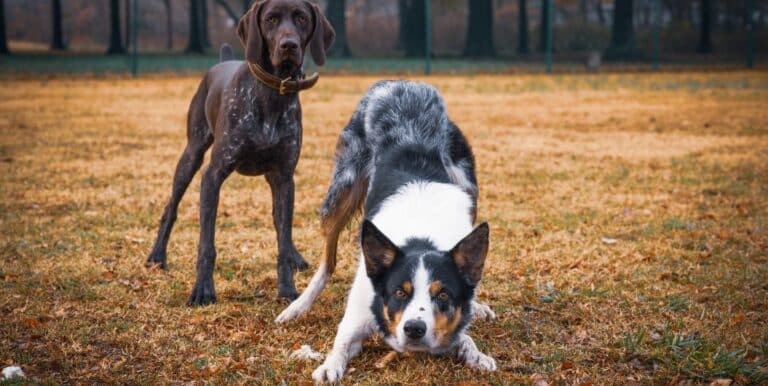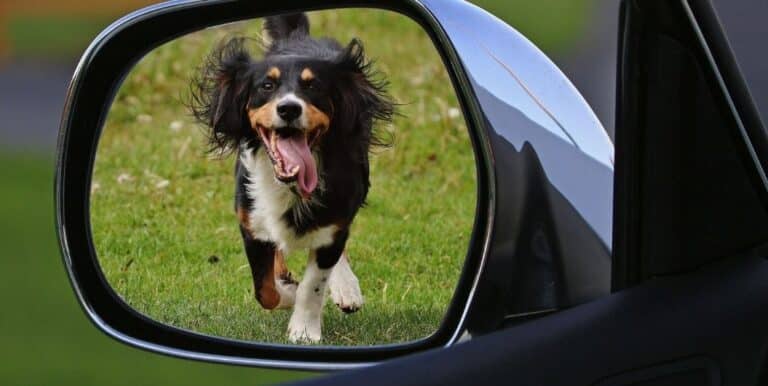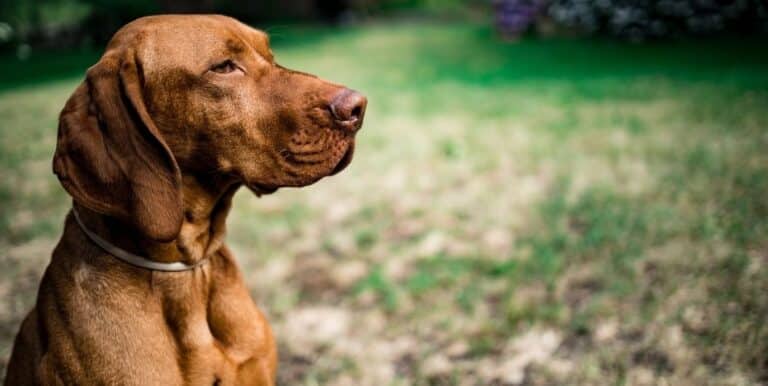The Beginner’s Guide to Zero-Waste Pet Care

While no two pet people are alike, we all share at least one big thing in common: our love and devotion to our pets!
For those of us pet people who are also interested in learning more about lessening our impact on the planet, it makes sense to think through how to involve our beloved pets in those efforts.
We want to do better! And, if you’re like me, you’ve probably taken a ton of amazing steps already: carrying reusable shopping bags, walking or biking instead of driving when you can, recycling, and so on.
You should feel proud of those efforts! Every single step, no matter how small it feels, adds up to massive change.
If you’ve been looking at your pet and thinking about how to apply those same values to your pet care routine, welcome! You’re in the right place, friends, and I’m so glad you’re here!
The thing is, the zero-waste lifestyle can seem overwhelming. There are lots of folks online who display their decade’s worth of trash in a single mason jar, and there are just as many people out and about who sneer the one darn time you forget your reusable bag. It’s hard to want to do good, to want to do better, and still to feel judged.
That’s not what I’m here for. You should feel good and you should be proud that you’re here in the first place because you’re taking the first step. So, let’s call this:
So, What Is The Beginner’s Guide to Zero-Waste Pet Care?
I wanted to compile everything you need to know to be an eco-friendly pet owner, but it was too daunting to put it all into one guide. Instead, this is the kick-start (or the quick start!) to get the journey underway.
Because, as Lao Tzu said, “The journey of a thousand miles begins with one step.”
Let’s take this first step together!
A Quick Note re: Terminology
Zero waste vs. sustainable vs. eco-friendly vs. blah blah blah!
Does your head spin when you hear all these words? Mine sure does.
It’s hard to tell which are meaningful and which are simply marketing… until you start to scratch under the surface.
I’m sure you’ve heard the term “greenwashing,” which basically means companies using unregulated terms that sound eco-friendly but don’t actually mean that the product or service offered is actually friendlier on the environment. Words like “natural” or “green” are meaningless, which we’re all pretty savvy to, but there are other ways manufacturers trick us into thinking something is green. One example of that sneakiness: products labeled CFC-free. You look at that and think, “Great! I don’t want to buy products that deplete the ozone.” But, the sneaky reality is that CFCs have been banned in the U.S. since 1995! The products HAVE to be CFC-free anyways!
So, what do these different “eco” terms mean, really? I’m going to share some of the commonly-accepted definitions of some of the more popular terms as they relate to eco-friendly pet care. Then, we’ll dig into actionable steps to lessen your pet’s carbon “pawprint!”
Zero waste
The concept behind this term is that no waste is sent to the landfill. All the waste you produce is either reused, recycled, or composted rather than sent out with the garbage. It’s become a buzzword and marketing term, so zero waste often means “lower” waste or a lower impact. Zero waste is probably impossible to achieve as a pet owner (more on that later in the guide), but it’s a good way to frame the concept, so I tend to use “zero waste” most often for that reason.
Sustainable
Literally, sustainability is all about practices, processes, manufacturing, etc. that doesn’t deplete our natural resources. A company that makes rope tugs for dogs out of bamboo and commits to replacing the harvest with new shoots is an example of a sustainable practice.
Eco-friendly
Definitely a buzzword. It basically means friendlier on the environment but doesn’t stipulate a degree of impact. If a product labeled eco-friendly does have less of an impact on the environment than a traditional counterpart, then great! But, read labels carefully! We’re pretty savvy with all this, but we were recently caught by greenwashing: I picked up a bottle of a cleaner that looked interesting. (I’m obsessed with truly eco-friendly cleaning… more on that in a few…) It was called something like Eco-Clean. I was in a rush, so I figured I’d take it home and see what’s what. I checked out, got home, read the label, and wouldn’t you know? In teeny-tiny print at the bottom, it said the “eco” stood for “economic!” It was an inexpensive cleaning product, NOT an environmentally friendly one. Eye roll emoji.
The bottom line?
Read labels. Google products. There’s just so much out there, and we all only have so much time! I’m going to recommend some that I’ve vetted here (and I also have a resource page for anyone who purchases a copy of The Zero-Waste Pet full guide) because those claims can be tough to wade through. I’ve already done the legwork so am happy to share!
OK, so now the big question:
What is the impact of pets on the planet?
“In 2009, a book on sustainable lifestyles came out and claimed that pets’ carbon pawprints are twice the size of gas-guzzling SUVs. In large part, the authors attributed that impact to diet.” – from The Zero-Waste Pet
Dogs and cats eat a lot, and dogs and cats eat a lot of meat.
Producing enough protein to feed the world is nearing the brink of impossibility, and our animals consume vast quantities of that protein. “The average European cat uses as many resources in his lifetime as the average African,” said Jason Clay of the World Wildlife Fund (WWF) in a presentation to the Pet Sustainability Council.
Not the average African cat. The average African.
With the dramatic, exponential growth in human population, that just isn’t sustainable—or even possible. Or reasonable.
So, yes, pets’ diets impact the environment tremendously.
There are many, many ways to decrease that impact, of course. And I’ll outline a few below. But I can’t overstate the importance of all the other pieces of pet care, too, like the toys you buy and how you clean your home and their things.
Quick aside on the cleaning piece: I’m legit obsessed with pet-safe, kid-safe, planet-safe cleaning. A giant bonus aside to that? Those cleaning practices are also crazy affordable. Like, WAY less expensive than commercial cleaners. I created a free download, The Pet-Safe Cleaning Guide, that you get if you sign up for my free seven-day email challenge. The challenge is one simple step to take each day over the course of a week. But you get the full cleaning guide as soon as you sign up and confirm. Save time. Save money. Save the planet. Check that out here!
Don’t feel overwhelmed! Don’t feel daunted! And don’t stick your pet on a vegan diet! (That last one, that’s a complicated topic for another time and place, but if you want to learn more, read this.)
Instead, approach it the same way you’ve approached your own zero-waste lifestyle: one simple swap at a time!
Let’s look at five easy zero-waste pet care swaps you can tackle throughout the year:
- Buy less. This needs to be the first step in any eco journey. Less stuff = less waste, both on the manufacturing end and at the end of the product’s lifecycle. Buying less starts with a good declutter so you know what you have and what you really, truly need. Then, when you do need to buy, buy secondhand!
- Filter your water. If your household purchases water, whether in one of those giant bottles or in individual bottles or gallons, stop! Add a simple filter to your faucet, and drink away… that includes filling your pets’ bowls with fresh, filtered, non-bottled water!
- Compost. You might already compost, but have you considered adding your pet’s fur, nail clippings, or stale biscuits? You can also compost your pet’s waste in a system specific for that purpose (like this or this), or DIY a pet-waste composting system yourself.
- Grow a pet-friendly garden. Plants filter and clean the air, so the more the merrier! If you can, grow pet-friendly veggies–there are even lots that many cats will eat–and stir in your home-grown fresh produce with their meals. (Bonus: If your vet’s OK with it, you can replace a small percentage of their meat-based meal with fresh fruits and veggies!) If you don’t have the space or green thumb, a windowsill herb garden adds some air freshening beauty to your kitchen, and parsley helps keep your dog’s breath fresh!
- DIY cleaners. For a fraction of the cost of what you can buy at the store, you can whip up cleaners that last longer, clean better, and have a much lower impact on the planet and your pet’s health. You will get the full guide if you sign up for the challenge, but a quickie recipe you can whip up today to clean literally anything: Combine 1 tablespoon of castile soap with eight ounces of water in a reusable spray bottle (I like this one). Shake well. Clean until it sparkles!
Lower-Impact Pet Care
Here’s how to go zero waste as a pet owner: one tiny step at a time!
Don’t be hard on yourself or feel like if you can’t eliminate 100% of your trash that you’re a failure! Let’s focus on lessening our pets’ impact on the planet without feeling pressure or guilt.
When it comes to raising a zero-waste pet, it’s all about progress, not perfection.
If you want to kickstart your journey with some no-pressure, one-step-at-a-time tips, definitely join the email challenge. It’s like hand holding but for your inbox. You’ll get one email a day for seven days. Each one has a single area of pet care to tackle to diminish your impact on the environment. Plus, there are tons of free downloads included.
In the meantime, let’s talk about some quick wins and product swaps I recommend so you can take action right this second!
20 Quick Wins for Eco-Friendly Pet Care
- Switch to biodegradable pickup bags like these or these.
- Call or email your city councilperson and ask them to swap bags at public poop stations for biodegradable versions. Make it easy and send some suggested brands!
- Use an environmentally-friendly kitty litter. This is what we use.
- Before you buy something, check Freecycle, craigslist, and NextDoor. We’ve found everything from crates to scratching posts (not to mention our patio furniture)!
- While you’re scoping those free sites, snag any crates or carriers you spot and donate them to your local shelter. They’re always in need at shelters, and what a great second life for a crate helping a pup or cat find their forever home!
- Buy the biggest sized bags, boxes, or cans of pet food available to cut down on packaging.
- Better yet, swap to a brand that only sells in recycled/recyclable packaging.
- Find treats made from invasive species. We like these.
- Grow organic catnip (in a container… that stuff spreads like crazy…).
- Brush your pet and toss the fur in a pile under a tree for birds to use for nesting material.
- Avoid the plastic bottles with pumps and triggers that can’t be recycled, and bathe your dog with planet-friendly castile soap. (Rumor has it the mint works on skunk, but I haven’t had to test that out yet–thankfully!) Your wallet will thank you, too!
- Walk your dog every day. Good exercise + fresh air = happy, healthy dogs and people!
- Better yet, commit to picking up a piece of trash when you pick up your dog’s poop. Chances are, you’ll find something–a bottle cap, paper, even a gross cigarette butt–within reach of your dog’s deposit. Put the bag over your hand, scoop the trash into the bag first, then scoop the poop into the bag.
- Even more goodness, pick up errant dog poop you find on your walks. Left-behind poop is an annoyance and it’s also a pollutant that contaminates groundwater. More on dealing with dog poop here.
- Stitch up any holes in their bedding and, if they wear it, their apparel.
- DIY toys and bedding for your pets from your old, worn-out clothing. Bonus: It’ll smell like you, which is comforting for your pet!
- Prolong the life of pet products with regular cleaning, washing, and repairing.
- Better yet, put your pet’s toys on rotation: They’ll last longer, and your pet won’t get bored as quickly!
- Make a delicious frosty treat for your pup without all the packaging. Mix yogurt with peanut butter and organic berries. Pour into a ramekin and freeze. Serve!
- Hug your pet! It’s carbon neutral!
So, ultimately, can you have a zero waste cat or a zero waste dog?
Let’s say you’ve taken the five steps above and checked all 20 quick wins off your list and joined the email course and done all seven days of zero-waste challenges… Are you then zero waste?
Well, probably not.
And that’s perfectly OK! Remember, this is a journey. A marathon, not a sprint. Focus on small, consistent steps, and you’ll create massive change!
Truthfully, because of their meat-heavy diet and inefficiencies in pet food production, it’s probably impossible to have a 100% zero-waste pet. It’s nearly impossible to be a 100% zero-waste human! But it’s totally possible and seriously admirable to try.
What is your pet’s carbon pawprint?
Want to delve deeper into these topics and more? Join our email community AND snag the free Pet-Safe Cleaning Guide right here!
You got this!






